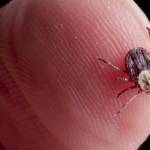Equine Piroplasmosis Seen Occasionally in U.S.

Equine piroplasmosis, or EP, is found in many places around the world, with about 90% of the world’s horses living in countries where EP has been diagnosed. Although several hundred horses in the United States have been diagnosed with the illness in recent years, the country is still generally considered to be free of EP.
EP is caused by protozoal parasites (Theileria equi or Babesia caballi) that infect a horse’s blood. Some horses with EP never appear to be ill, while others may show only minor weakness or loss of appetite. In severe cases, however, infected horses can develop sweating, reluctance to eat or move, fever, muscle weakness, colic signs, and labored breathing. Clinical tests show anemia and hemoglobin (red blood cell pigment) in the urine of infected equines. Some horses die within a day or two of becoming ill, while others recover over a period of weeks or months. Even after returning to what appears to be a healthy state, infected horses can continue to carry the protozoa in their blood.
Natural transmission is by ticks that feed on infected horses and then bite uninfected animals. An outbreak that affected more than 400 horses in Texas in 2009 is believed to have involved natural tick-borne transmission by cayenne ticks and American dog ticks. On the ranch where the disease was first diagnosed, more than 290 of the 360 horses on the property tested positive for the disease. Several other cases in the region were also traced back to the ranch. The ticks were found on the ranch and proved to be capable to transmitting EP between horses.
The disease can also be spread by the use of contaminated needles, syringes, or surgical instruments. It is believed that small groups of infected horses found in Florida in 2008 and Texas in 2009 got the disease from shared needles or syringes. In the Florida incident, several of the horses in the group had recently been imported from Mexico, a country where EP is known to be found. Scattered cases found elsewhere in the U.S. are believed to be related to infected horses that were imported in previous years from countries where the disease is widespread. A more sensitive test was introduced in 2005 to be used during import examinations.
Although no preventive vaccine has been developed, treatment is sometimes effective in eliminating piroplasmosis. Generally, B. caballi infections are easier to clear than T. equi. Imidocarb dipropionate (Imizol), a drug used to treat a similar disease in dogs, is given by intramuscular injection and is quickly absorbed. Used to treat infected horses in Texas, one round of Imizol led to negative tests for T. equi in 158 of 163 quarantined horses on the ranch. The remaining five horses tested negative after a second round. A drawback is that the drug has an extremely narrow margin of safety, and several cases of toxicity (colic) were reported when horses were given the amount recommended as therapeutic. It is hoped that future studies will lead to both a preventive vaccine and also less toxic drugs for the treatment of EP.








